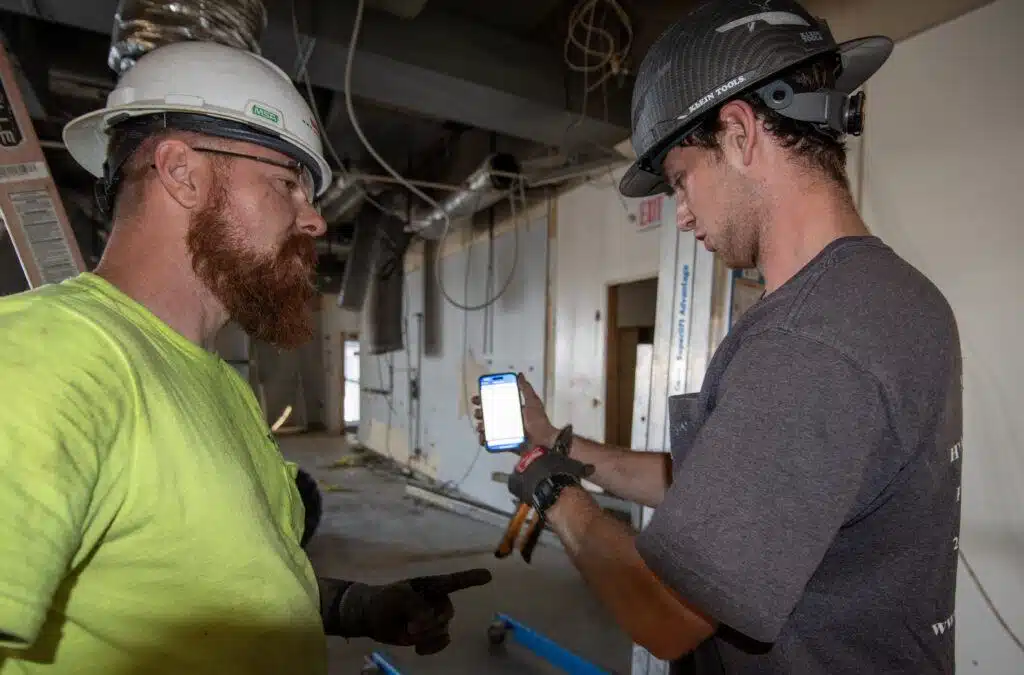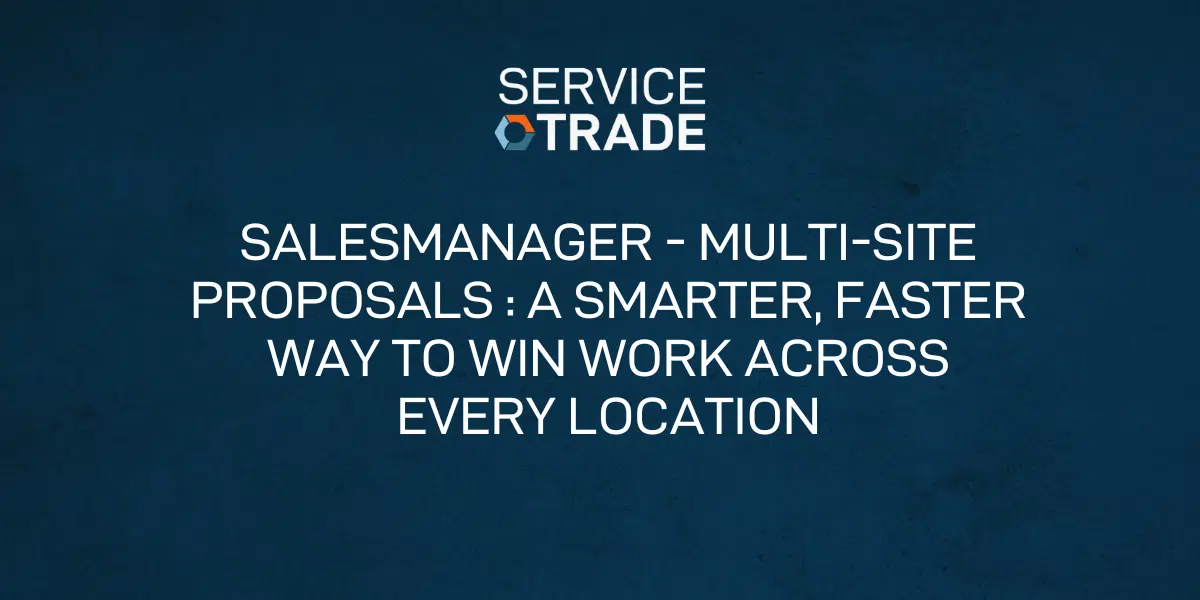
Top Exit Strategies for Mechanical Service Businesses

After years of building a successful commercial mechanical service business, many owners eventually face the question: “What’s next?” Whether you’re looking to retire, pursue new ventures, or simply cash in on your hard work, if selling your business is the right choice for you, having a clear exit strategy is crucial for maximizing your business value and ensuring a smooth transition.
Why Exit Planning Matters
It’s time your hard work pays off after the long hours you’ve put in making sure the team is busy year-round and that each customer is happy. With the right strategy, you can increase your company’s value, protect your legacy, and create options for the future.
The key to a successful exit isn’t just about finding a buyer. It’s about positioning your business to be as attractive and valuable as possible when the time comes to sell or make the next big move.
The Most Common Exit Paths for Mechanical Service Contractors
Understanding the top exit paths and which one fits your goals is essential for mechanical service business owners planning their future.
SELL to a Larger Strategic Buyer or Competitor
This involves selling your business to another company in the mechanical service industry—whether it’s a larger industry player seeking to enter your geographic area, or a competitor looking to expand their market share through a merger or acquisition (M&A). Strategic buyers or mechanical service acquirers often pay premium prices because they can realize synergies through combined operations, expanded customer bases, and operational efficiencies.
Advantages:
- Typically commands the highest valuation
- Buyers understand the industry and business model
- Faster due diligence process
Considerations:
- May result in significant changes to company culture
- Potential job losses due to redundancies
- Less control over the transition process
Financial Buyer or Private Equity Acquisition
Private equity firms and financial buyers purchase commercial service businesses based on their cash flow potential and growth opportunities. They’re less concerned with industry synergies and more focused on financial returns.
Advantages:
- Often allows existing management to stay in place
- May provide opportunities for continued growth and expansion
- Can offer equity participation for future upside
Considerations:
- Typically involves significant debt financing
- Pressure for aggressive growth and cost management
- May require partial seller financing
Management Buyout or Employee Stock Ownership Plan (ESOP)
This path involves transferring ownership to your existing management team or employees. For owners who want to preserve their business legacy, maintain company culture, and transition the business to trusted hands, an internal transfer (either to key managers or a family member) can be a compelling option.
This exit strategy can be structured as a traditional buyout, an ESOP, or a gradual transition over time. An ESOP allows employees to become owners over time by purchasing shares through a trust, often financed by the company or a loan.
Advantages:
- Rewards loyal employees
- Preserves company culture and values
- Allows for gradual transition and mentoring
- Potential tax advantages with ESOP structure
Considerations:
- May not achieve maximum valuation
- Requires strong management team
- Financing can be complex
- Seller often needs to provide financing or guarantees

What Mechanical Service Business Buyers Look For
Understanding what buyers look for and learning how to increase your business value is crucial in maximizing your exit valuation.
Strong Recurring Revenue Streams
Buyers highly value predictable, recurring revenue from maintenance contracts and service agreements. This provides cash flow stability and reduces customer acquisition costs.
Operational Excellence
Well-documented processes, efficient operations, and strong field service management systems demonstrate that the business can run successfully without the owner’s daily involvement.
Diversified Customer Base
A broad customer base reduces risk and shows market stability. It demonstrates that the value of a commercial services business is not over-dependence on any single customer or industry sector.
Strong Financial Performance
Clean financial records, consistent profitability, and strong cash flow are fundamental requirements for any serious buyer.
Skilled Workforce and Management Team
A competent team that can continue operations post-sale is essential, especially if you plan to step away completely.

Preparing Your Business for Exit
Taking steps to boost recurring revenue, optimize operations, and increase your valuation should begin years before you plan to sell. Buyers are looking to see how your mechanical service business closes more sales and retains a strong customer base for sustainable growth.
Build Recurring Revenue
Focus on expanding your maintenance contract base and developing long-term service relationships. This creates predictable cash flow that buyers value highly.
Optimize Operations
Implement systems and processes that reduce your personal involvement in day-to-day operations. Document procedures, cross-train employees, and establish clear management hierarchies.
Strengthen Financial Management
Ensure your financial records are accurate, up-to-date, and professionally prepared. Consider working with a CPA to optimize your financial presentation and identify areas for improvement.
Develop Your Team
Invest in training and developing your management team. Strong leadership that can operate independently increases your business value significantly.
Clean Up Legal and Compliance Issues
Address any outstanding legal matters, ensure all licenses and certifications are current, and resolve any compliance issues that could complicate a sale.

Financial and Team Preparation
Preparing your finances and team for a smooth, profitable transition is essential for a successful exit strategy.
Financial Preparation
- Organize and audit financial statements for the past 3-5 years
- Identify and address any unusual or one-time expenses
- Optimize working capital management
- Consider tax implications of different sale structures
- Engage qualified advisors including attorneys, accountants, and business brokers
Team Preparation
- Develop succession plans for key positions
- Create retention incentives for critical employees
- Communicate appropriately with your team about transition plans
- Ensure knowledge transfer and documentation of key processes

Contractor Exit Plan FAQ
Consider selling your mechanical service business when you’ve achieved these key indicators:
Business Readiness:
- Built sustainable recurring revenue through maintenance contracts
- Operations run independently without your daily involvement
- Documented processes and trained management team in place
- Strong financial performance with clean, auditable records
Market Timing:
- Current M&A market shows strong buyer demand and favorable valuations
- Industry consolidation creating premium pricing opportunities
- Your personal financial and retirement goals align with exit timing
Performance Metrics:
- High technician productivity and operational efficiency
- Streamlined processes from proposal to billing
- Profitable service agreements with clear margins
- Strong customer retention and satisfaction scores
Warning Signs You’re Not Ready:
- Declining revenue or shrinking margins
- Over-dependence on key personnel (including yourself)
- Weak financial systems or accounting processes
- Operational inefficiencies that need addressing first
The best time to sell is when you’ve built a valuable, efficient business that demonstrates consistent growth and can command premium pricing in today’s active M&A market.
Start planning your exit strategy now—regardless of when you plan to sell. The best time to begin exit planning is when you’re building a stronger, more valuable business, whether you’re “years away from selling or just starting to think about your next chapter”
Key reasons to start exit planning early:
- Build long-term value: Exit planning isn’t just about selling—it’s about creating a business that can increase your company’s value, protect your legacy, and create options for the future
- Understand your options: Learn about “the most common exit paths—and which one fits your goals before you need to make decision
- Prepare systematically: You’ll need time to boost recurring revenue, optimize operations, and increase your valuation
- Smooth transitions require preparation: Getting your finances and team ready for a smooth, profitable transition” takes years, not months
Whether you’re planning to exit in 2 years or 20 years, the strategies that make businesses more valuable—recurring revenue, operational efficiency, and strong financial systems—are the same ones that make businesses more profitable today.
The mechanical service contractors who maximize their hard work, protect their legacy, and sell on their terms are those who build exit-ready businesses from day one.
When planning your HVAC exit strategy, focus on building long-term business value through strategic planning and operational excellence. Key considerations include:
Business Foundation:
- Clear, measurable goals: Establish revenue targets, customer satisfaction levels, growth projections that align with your overall mission and provide a roadmap for success
- Financial health: Implement ratio analysis to evaluate key metrics like gross profit margin, debt-to-equity, and return on investment
- Contingency planning: Develop strategies to handle unforeseen events that could impact your business’s financial health, such as a decline in sales or economic downturn
Operational Excellence:
- Professional team development: Build a reliable team that represents your brand, as team members are the backbone of your business
- Strategic partnerships: Consider partnering with other businesses that compliment your services” to create new revenue streams and strengthen your client base
- Performance tracking: Establish key performance indicators (KPIs) to track progress and measure success using metrics like customer retention rate and revenue growth
Market Positioning:
- Competitive differentiation: Understand your competitors’ strategies, strengths, and weaknesses to position your business effectively
- Customer focus: Prioritize customer service and satisfaction as exceptional service builds long-term relationships and positive word-of-mouth referrals
- Continuous improvement: Continuously review and update your plan to adapt to market changes and industry trends
Long-term Value Creation: Remember that building an HVAC business plan is not a one-time activity. Successful exit planning requires ongoing investment in education, strategic partnerships, and operational efficiency that positions your business for maximum value when you’re ready to transition.
Build a Large, Diversified Customer Base
- Develop many customers rather than relying on a few large accounts, as having few is risky for the future owner
- Establish direct, persistent, and meaningful connection with the end customer rather than depending on third-party referrals
- Avoid over-dependence on manufacturers or management companies, as this business generally does not count as value
Maximize Customer Lifetime Value (CLV)
- Create lots of predictable repeat business from each customer through maintenance agreements and service contracts
- Provide exceptional customer service so customers would never think of using any other company for any service that you can provide
- Manage and mine customer data vigorously for new service call opportunities” to increase revenue per customer
Minimize Customer Acquisition Costs (CAC):
- Build a strong brand reputation that attracts customers through referrals and positive reviews rather than expensive advertising
- Create digital service experiences that customers can review and recall and easily share with others
- Avoid fighting a trove of negativity in the market associated with poor customer service” which creates expensive acquisition costs
Key Success Factors:
- Implement digital systems that create shareable online digital components rather than paper invoices that find the trash quickly
- Focus on customer experience and service quality, as price is important for each service but the overall experience drives loyalty
- Make it easy for customers to “rave about you and forward your digital service artifacts onto others or post them online
By focusing on these principles daily in your business decisions, you’ll increase your payday when you cash out, whether that cash is a financial transaction or simply a passing of the torch to the next generation.
Maximizing Your Mechanical Service Business Value
The most successful exits don’t happen by accident—they’re the result of careful planning and strategic improvements made over several years. If you want to maximize your hard work, protect your legacy, and sell on your terms, developing and executing a comprehensive exit strategy is essential.
Start by honestly assessing your current business value and identifying areas for improvement. Focus on building the recurring revenue streams, operational systems, and management capabilities that buyers value most. And remember, the best time to start planning your exit is well before you’re ready to leave.
Whether you’re years away from selling or just starting to think about your next chapter, taking action now to strengthen your business will pay dividends when it’s time to make your exit. Your mechanical service business represents years of hard work and dedication—make sure your exit strategy reflects that value.
To learn more about choosing which exit strategy is right for you, take a look at our latest guide – Building a Commercial HVAC Business for a Successful Exit

STOP TYPING. Start Scanning. Technicians have always done whatever it takes to get the job done, but manual asset entry has never been the part they enjoy. Between faded serial plates, tiny lettering, and tight schedules, capturing equipment details by hand slowed everyone down. And when the data wasn’t complete or accurate, the office was […]
You’ve invested in software. You’ve digitized processes. You’ve built dashboards. Yet somehow, your team still asks, “Whose numbers are right?” You’re not alone. Many commercial service contractors invest heavily in data tools only to see minimal ROI. The problem usually isn’t the technology—it’s one of these five critical failures. Failure #1: Skipping Stages The mistake: […]